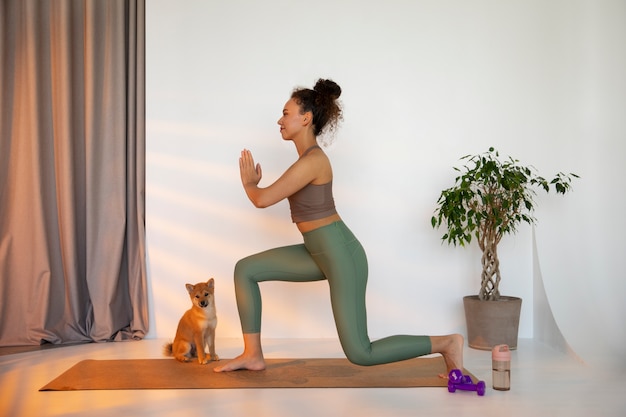
A yoga body isn’t just about flexible limbs; it’s an ancient practice that can boost your memory, heart, and bone health, as explained by Anna Magee.
These days, people in the UK are spending a whopping £790 million yearly on yoga classes and mats. While some yoga trends get pretty wild—think rage yoga, naked yoga, or even dog yoga—the benefits of yoga are increasingly backed by science.
Researchers from UCLA discovered that a three-month yoga and meditation course is more effective at reducing age-related brain decline than memory exercises. Another study showed that yoga improves sleep quality in breast cancer survivors.
Former advertising executive Lucy Edge, 53, chose yoga over prescribed antidepressants when struggling with depression. After a six-month career break in India to learn yoga, she felt happier and more content, even though she didn’t achieve a “yoga goddess” body. Lucy has since written three books on yoga and founded Yoga Meds, which provides clinical trial information on yoga’s benefits for conditions ranging from arthritis to obesity.
Yoga can enhance your health in several ways, and it’s easy to start. For example, if you’ve been relying on puzzles for memory training, you might benefit more from yoga. A UCLA study involving adults over 55 showed that those who practiced yoga and meditation for 12 weeks experienced better memory, reduced depression and anxiety, and increased stress resilience compared to those who did only memory exercises.
You don’t need to spend hours doing headstands to benefit from yoga. In the study, participants practiced an hour of gentle Kundalini yoga per week, which includes breathing techniques, meditation, and chanting mantras. They also did 20 minutes of Kirtan Kriya daily, a meditation involving chanting, hand movements, and visualizing light.
Yoga is also great for heart health. A 2014 review in the European Journal of Preventative Cardiology found that yoga could reduce heart disease risk as effectively as conventional exercises like brisk walking. Stress reduction through yoga helps lower blood pressure and heart rate, reducing the chances of blood clots. Practicing yoga can also improve emotional health, addressing conditions like anxiety, stress, and depression, which are common among heart disease patients.
Restorative yoga, with postures supported by bolsters and cushions, is an excellent way to reduce stress. Musculoskeletal physiotherapist and yoga teacher Sarah Shone incorporated yoga into a rehabilitation program for back pain, and 87% of participants reported pain reduction. Yoga is recommended by NICE for lower back pain and can improve pelvic floor strength and bone density.
If you’re new to yoga, inform your teacher about any health concerns and start with a gentle style like Hatha or Iyengar. For specific issues, consult your doctor about subsidized yoga programs.
Choosing the right yoga mat is essential. Consider where you’ll use it, its portability, and your height. A thicker mat is beneficial for joint protection. Healthista recommends the Elephant Cork Yoga mat from Valka Yoga, made from renewable materials and offering excellent grip and cushioning.
Yoga blocks are helpful for beginners learning difficult poses. A cork block offers better stability and grip than foam.
Regardless of flexibility, different yoga styles can suit your needs. Yin or Restorative yoga is calming, Vinyasa Flow is energetic, Iyengar focuses on precise postures, Anusara combines alignment with movement, and Yoga Therapy is tailored for healing injuries or illnesses.

